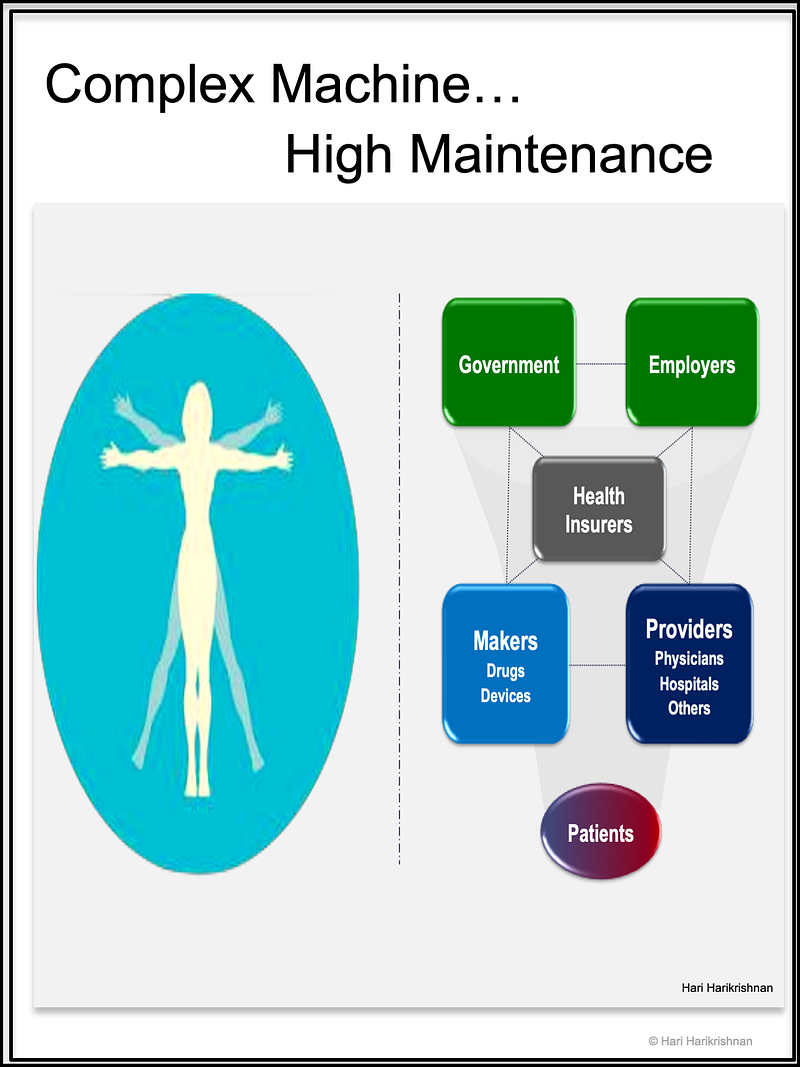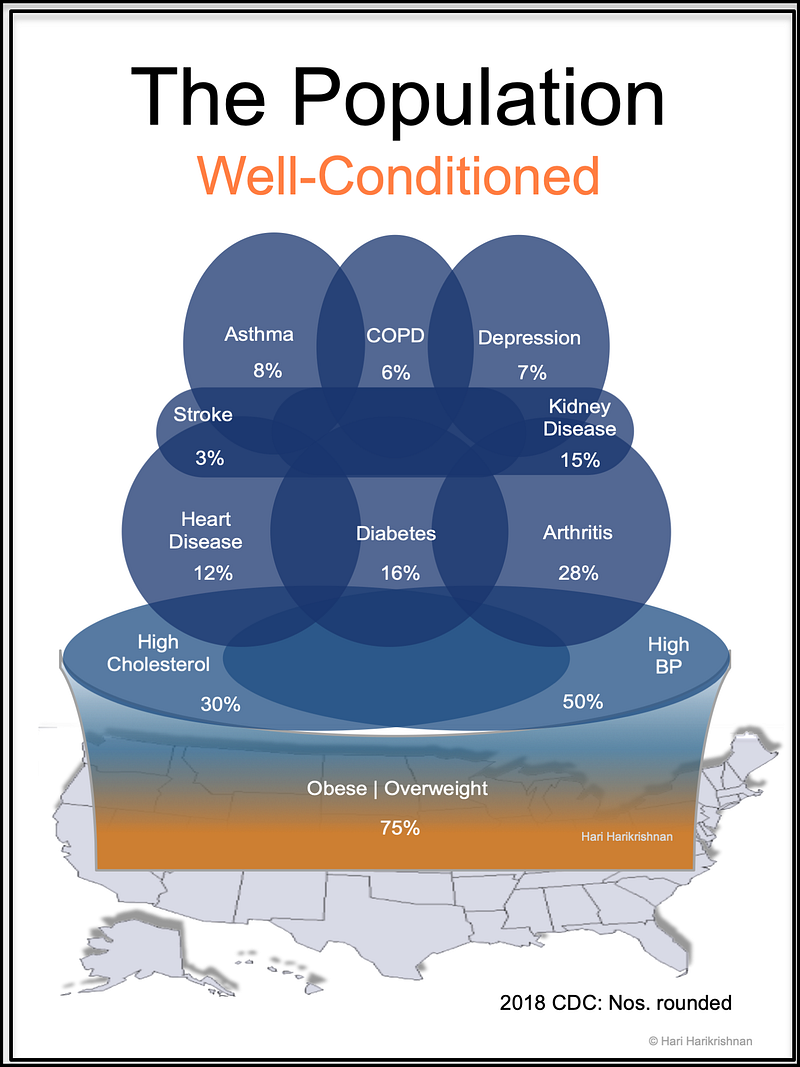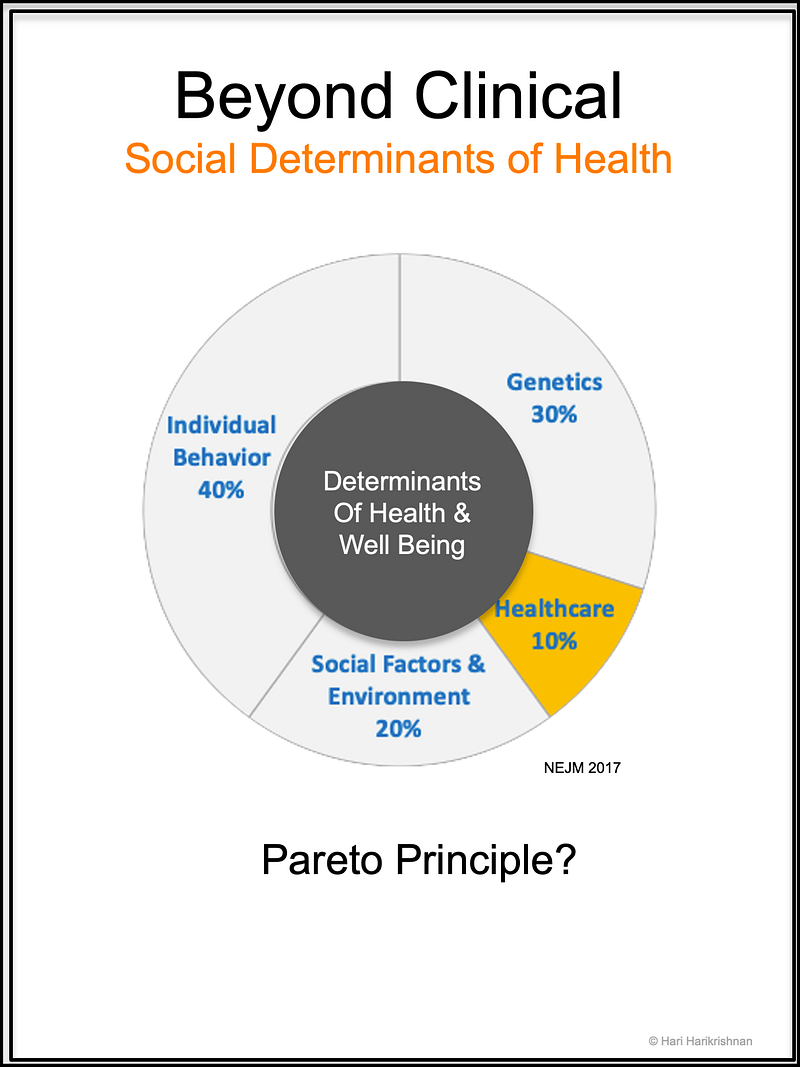We know the 80/20 rule — majority of consequences result from a few causes. Examples include how a big portion of wealth is concentrated in fewer individuals, how a small portion of population contributes to majority of healthcare spending, how bulk of company revenues come from a minority of customers etc.
US national healthcare expense has surpassed $4 trillion. Per-capita spend is over $12,000 per year. Talking about health expenses and our healthcare system beats flogging a dead horse.
Does the 80/20 rule, the Pareto principle, apply to how we spend money for our overall wellbeing? Is the bulk of our spending targeted towards where the impact is highest? Do we spend $4 trillion to solve a 10 percent problem.
Let’s examine this through four lenses:
- Our system of care
- Comparative health outcomes vs. spend — US vs. similar countries
- Health of our populations
- Impact of clinical care on our overall wellbeing
Our System — Complexity is Our Pride
We’ve a healthcare system that has elements of every other system in the world buried inside — from single payer to private insurance to employer-financed sub-systems.
The myriad ways we get our care and pay for it requires a complex dance of providers, administrators, insurers, employers, and technology makers.
One would think we’ve purposely designed a complex system to care for a complex system — our body.
The system ingests $4T a year and spits it out. For an infographic on how it happens, see the X-ray of a tapeworm.

The Outcomes — Not Getting our Money’s Worth

Comparisons of US health care system and spending with other economically advanced countries galore. It can be summed up as “ not getting our money’s worth”.
Measured by the ultimate metric — life expectancy at birth — vs. per-capita spending, US is an outlier. We’re the run-away train when it comes to spending as shown above over nearly 50-years. Other non-financial measures such as DALYs and QALYs — disability-adjusted life years and quality-adjusted life years — or detailed disease burden data tells the same story of poorer outcomes.
Population Health — We Have Issues!

The answer to the simple question “how are you doing?” can be answered at the population-level: We have issues.
We are a crucible of chronic conditions. Nearly 3 out of 4 of us are obese or overweight. And the bad news gets worse from there as health conditions pile on top of each other.
About 1 in 3 of us live with co-morbidities and are deemed polychronic.
All this makes one wonder if the state of our population is the product of our system or if the state of our system the product of our state of health?
Yes, we’ve heard these facts ad nauseam, and the rhetorical questions that accompany them! What does all this have to do with the Pareto principle?
Beyond Clinical Care

This picture shows NEJM research from 2017 — only 10% of our wellbeing is attributable to clinical care. 60% is due to our behaviors, social circumstances, and the environment.
In other words, we spend $4T to solve a 10% problem.
This needs to be restated, perhaps perversely, to conform to the Pareto principle — most of our health spending is concentrated on solving a few of our problems.
This still leaves the question of impactful spending unresolved.
Summary
Depicting the state of our health care would look as shown below and would read as follows:
We spend $4 trillion via a complex system to care for an unhealthy population without getting our money’s worth while solving for a 10% problem.

Be assured that enough smart people are working on pieces of this problem. CDC’s Healthy People 2030 initiative should help. The increased awareness post-pandemic will help. However, it remains to be seen how fundamentally our system of care will change to focus on the 60% problem — those driven by social, behavioral, and environmental factors.
Hope springs eternal!
Originally published at https://www.linkedin.com.





